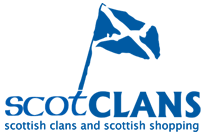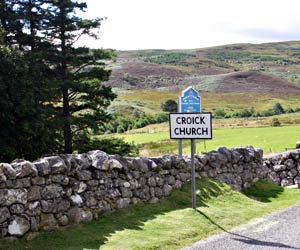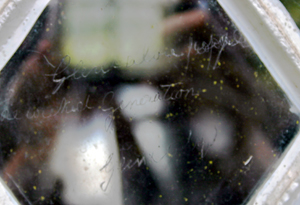The GlenCalvie Clearances
A long drive through beautiful countryside from the small highland village of Ardgay leads down to a small church. Croick church is a pretty building not unlike many other Scottish churches, built from a design by the engineer Thomas Telford. There is little to set it apart, these white hurled walls and manicured churchyards can be seen all over Scotland.
As you walk around the church you pass the east window, small diamond panes of simple clear glass. A step beside the window invites you to look closer so you do, only to discover that each pane contains a small inscribed message; some just a date or a name, others more evocative messages. The careful scripted writing suggests that this is not just youthful graffiti, these are the words of the Glen Calvie residents, evicted from their lands in the infamous Highland Clearances.
The Highland Clearances are one of the dark stains on our nations history; although in a wider perspective they were simply part of the agricultural changes happening all over the United Kingdom, the low level of protection offered to small subsistence farming tenants under Scots law, coupled with the brutality of their treatment made the highland clearances particularly shameful.
Since the end of the Jacobite risings the British government had been working on many ‘improvements’ designed to keep the highland clans in line. Many clansmen were emigrating to America to seek a new life and at the same time the increasing demand for cattle and sheep across Britain led to new breeds better equipped to survive in highland climates. Some landowners and clan chiefs such as Admiral John Ross of Balnagowan Castle and MacLeod of MacLeod began to remove people living on suitable land, many being forced to less workable coastal areas where they would fish or gather kelp.
In 1807 Elizabeth Gordon, 19th Countess of Sutherland and her husband Lord Stafford (later made Duke of Sutherland) became seized by the idea of turning much of their land across to sheep farming. Sutherland’s agents soon began evicting families from the land they had worked for generations, many having no time to lift their crops they were moved by force to coastal lands with no shelter. The Countess of Sutherland and her factor, Patrick Sellar, were especially cruel and their names are reviled in Sutherland to this day. Donald McLeod, a Sutherland crofter, later wrote about the events he witnessed:
“The consternation and confusion were extreme. Little or no time was given for the removal of persons or property; the people striving to remove the sick and the helpless before the fire should reach them; next, struggling to save the most valuable of their effects. The cries of the women and children, the roaring of the affrighted cattle, hunted at the same time by the yelling dogs of the shepherds amid the smoke and fire, altogether presented a scene that completely baffles description — it required to be seen to be believed.
A dense cloud of smoke enveloped the whole country by day, and even extended far out to sea. At night an awfully grand but terrific scene presented itself — all the houses in an extensive district in flames at once. I myself ascended a height about eleven o’clock in the evening, and counted two hundred and fifty blazing houses, many of the owners of which I personally knew, but whose present condition — whether in or out of the flames — I could not tell. The conflagration lasted six days, till the whole of the dwellings were reduced to ashes or smoking ruins. During one of these days a boat actually lost her way in the dense smoke as she approached the shore, but at night was enabled to reach a landing-place by the lurid light of the flames.”
This brutality escalated as many clan chiefs once charged with the protection of their people had become distant landlords who cared little for their plight in favour of greater profit.
Throughout this time the families living in Glen Calvie worked the land as best they could, knowing that some day their time would come, in 1845 the horror of the clearances finally came to this peaceful glen.
For as long as anyone could remember the Glen Calvie people had been model tenants, living in modest turf cabins they grew barley and oats and herded cattle and sheep. Despite being forced to pay a vastly inflated rent for their land almost four times the average there had been very little arrears, there were no paupers and not one person in the valley had been charged with any offence for years. They had been loyal to their chief and to their monarch with many men volunteering to fight for their country.
But over the years they had witnessed the rape of the lands around them, heard of the homes burning and the people cast destitute from them. When word came in 1845 that their valley was to be cleared too they met their fate with quiet dignity. With the new Scottish Poor Law in prospect, other cottages were refused to them so eighteen families of around 92 individuals had nowhere to go and so they marched out of the glen in a body, with two or three carts filled with children, many of them mere infants; and other carts containing their bedding and other requisites. The whole country side was up on the hills watching them. They found shelter in the grounds of Croick church. It was a wet and cold Saturday afternoon but they would not shelter in the church itself for fear of breaking it’s sanctity but rather made a shelter of sorts in the grounds. Around a small fire mothers and small children huddled.
Some of those broken individuals scratched their names and brief messages into the glass of the church, perhaps realising that they would soon vanish forever they attempted some small monument to mark their existence, others needed to share their thoughts and these are particularly poignant. ‘This House is Needing Repair’ seems to be a comment on the spiritual erosion of the community and ‘Glen Calvie People the Wicked Generation’ is also very telling as it suggests that these people who trusted their church and their chief for generations could not believe that those who had always protected them were now turning them out of their homes. to them their misfortune was the result of their own sinful behaviour! Another telling point is that these were native Gaelic speakers and yet their comments were written in English, almost as if they realised their highland culture would leave the valley with them.
After several days this sad chapter came to a close and the people left, few records exist of where they went and how many survived. The fact that so few monuments exist to such a terrible time in our history is a national disgrace. One statue to the exiled Scots stands in Helmsdale, paid for by a wealthy American while the towering monument to the first Duke of Sutherland still looms over the landscape at Ben Bhraggie.
Some refer to the clearances as ‘ethnic cleansing’. This is not entirely accurate. Such atrocities have been perpetrated by one people on another; Nazi on Jew, Serb on Croat, Croat on Serb. What makes the ‘Clearances’ unique is that these atrocities were perpetrated by those responsible for the protection of the very people they were evicting. As for the Sutherlands, later generations did seem to acknowledge their dreadful past; the wife of the 4th Duke Duchess Millicent was great philanthropist who invented Highland Home Industries, arranged for the trademark of Harris Tweed, built technical schools and fought industrial diseases
Many tourists wind their way up the A9 and visit the magnificent Dunrobin Castle, not realising that the roots of this great wealth are buried under the stone and ashes of lost livelihoods, fewer may spot a monument on a lonely hillside on their way back towards Inverness and realise the dark shadow it casts, and fewer still make their way up 10 miles of single track road to a small white church to see the real monument to the lost people of the highlands etched in a few panes of glass.
Blog posts about The Highland Clearances
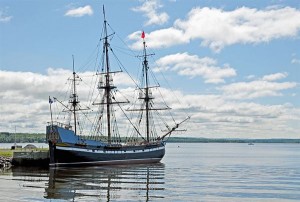
The Voyage of the Hector
Read More
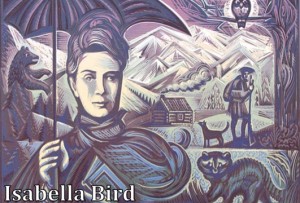
A Victorian View Into Scottish North America: Part Two Of Lady Isabella Bird’s Encounters With Scots In Canada And America
Read More
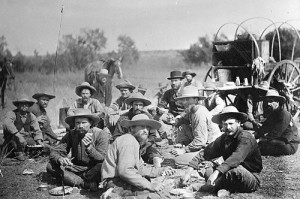
Murdo Mackenzie: The most influential cattleman in America was from Scotland
Read More
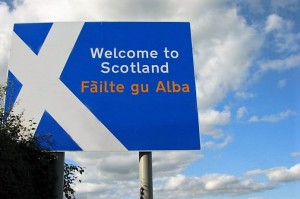
Getting comfortable with Gaelic’s indigenous side – a few things to consider
Read More

“Our children are bred for emigration”
Read More

Dundee Actress Cast for Highland Clearances film
Read More
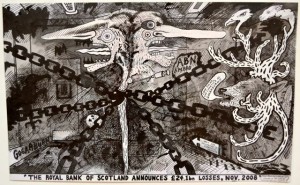
Martin Fowler’s Graphic History of Scotland
Read More
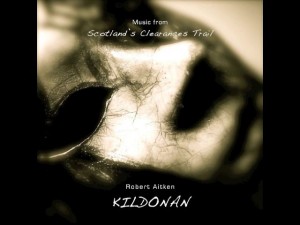
Highland Clearances Influence Composer
Read More
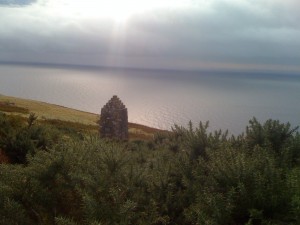
Life On The Edge
Read More
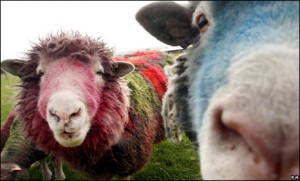
The Year of Sheep – Scots Protest against The Highland Clearances
Read More
